If we want to understand the real identity of the Meeteis, we need to explore the elements of Lai Haraoba (merrymaking of Meetei deities). Although, Meetei community is a major ethnic group in Manipur, it is just a minority group in India and the world.
Lai Haraoba is one of the important indigenous religious rituals of the Meetei community which implies the creation of the earth and man. None can claim the exact time when Lai Haraoba festival started, and it still remains unknown.
According to Panthoibi Khongul Puya, it is found that Panthoibi’s mother-in-law Manuteknga and her father-in-law Khaba Sokchrongba started worshipping Panthoibi and Nongpok Ningthou by building a temple (laishang) after Panthoibi, wife of Tarangkhoinucha and daughter of Meetei king got married to Nongpok Ningthou.
Like many other Meetei localities of Manipur, the people of Keirao village have been worshipping the umanglai deities, ‘Nongpok Ningthgou and Panthoibi’ for the last many years. This year as well, Lai Haraoba festival was organised with pomp and gaiety from 25 March to 2 April 2013 at the Keirao Nongpok Ningthou Panthoibi Haraobung for nine days. The festival was organized by the Nongpok Ningthou Panthoibi Development Committee formed by four leikais (localities) of the village.
The glamorous Lai Haraoba festival of the village was organized with the contributions from these four localities. To make the Lai Haraoba occasion a success, the respective localities raised funds by setting up marup (saving fund) for which every household contributed Rs. 20 every month.
In Keirao village, a unique custom is prevalent wherein bridegrooms are not allowed to sit on the luhongfal (traditional wooden seat) in wedding ceremonies while the bride is not allowed to wear potloi dress. If a bride from the outside this village happens to enter the village, she has to change her potloi dress. The village deities Nongpok Ningthou Panthoibi do not allow wearing such dresses, says a local elder.
CELEBRATION OF LAI HARAOBA
LAI IKOUBA – The first day of Keirao Nongpok Panthoibi Haraoba began with ikouba rituals from the Iril river. It is a ceremony to welcome the souls of the deities out of water. Ikouba ritual was observed with the presence of Maiba Maibi, pena khongba and others. Yu (local brew) and khayom lakpa were offered to the deities for bringing welfare and peace of the village and successful observance of the festival.
In lai ikouba, two men holding swords will go in the forefront and be followed by two unmarried girls holding Senkha, two women holding kaoshel humai and two men (lai puba nupa) holding leiyom thetpa ihaifu respectively.
During the festival, lai yakeiba (awakening of deity) ritual is observed with pena (traditional string instrument) by pena khongba (Pena artist) daily in the morning. After completion of yakaiba, Maibis, sitting before the temple, will convey the message of the deity (laipao chenba) followed by Lai luk chanba ritual.
In the day time, Maibis will dance in front of the temple. Lei langba by Leiroihanjaba and hoi laoba are observed consecutively. After hoi laoba, laibou chongba, singing of anoirol hymn are done. Singing of wakol hymn through moving in the style of a python twisted its body (lairel mathek) and the deities will be carried to the temple. Later a pena artiste will sing naosum hymn. Sharoi khangba ritual is also important ritual to be done by the maibis during the occasion.
LAI LOIBA – concluding day of the festival is called lai loiba. On this day, wakol thaba hymn is sung after finishing laibou chongba. A dance drama played by the tangkhul huitok pakhang and tangkhul nurabi is displayed. This dance drama popularly known as Tangkhul shaba shows the fraternal relationship between the Tangkhul community and the Meetei community in Manipur who are the indigenous people of the State. The festival ends with singing the hymns ougri hangel, khencho paosha, hiyal lon.
During the Keirao lai haraoba festival celebrated for nine days, many cultural programmes such as dances played by the local youths, martial arts thang-ta show were also showcased.
After the festival, indigenous games-race, mukna (wrestling), thouri chingbi (Tug of war), pou chingnabi were organized. The winner of the Mukna game was given mukna jatra award. He is the champion of the village for this year.
The origin of the festival is that the deities held the first Lai Haraoba on the Koubru hill, so that their descendants should imitate them and perform the same as it had been done by the deities so that they will never forget the secret and sacred story of the creation of this universe and the birth of the different lives on this earth.
Meeteis believe that Manipur is a land of the deities with Atiya Shidaba as the supreme God. Atiya Shidaba, Apanba, and Asheeba are the three manifestations or incarnations of God as the creator, the preserver and the annihilator of this universe. Pakhangba, Sannamahi and Nongpok Ningthou are the incarnations who play the role of the male deities of the Meeteis while Leimarel Shidabi and Panthoibi play the role of female deities. Besides these, 364 deities with their consorts are the most important deities worshipped by the Meeteis.
Sannamahi and Leimarel are worshiped in every house of the Meeteis. The other gods and the three hundred and sixty four deities are worshiped in the “Umang lai Laisangs” (temple of gods in the reserved woods with spacious grounds) in the villages. The Umang Lai Haraoba (merry festival of the jungle Gods) is the most important ceremony in which the deities are worshiped by all inhabitants of the village as a symbol of the part and parcel of the creation work. Meeteis take every male and female as God and Goddess who play the role and deities in the festival.
The rituals within the festival are the same except in some items or hymn such as ikouba, ikourol, and yakairol at the beginning and mikon thagonba, ngaprum tanba at the end of the festival. In the performances, the evolution story with the amorous love-affairs of Nongpok Ninghthou and Panthoibi is depicted and played equally in all kinds of lai haraoba.


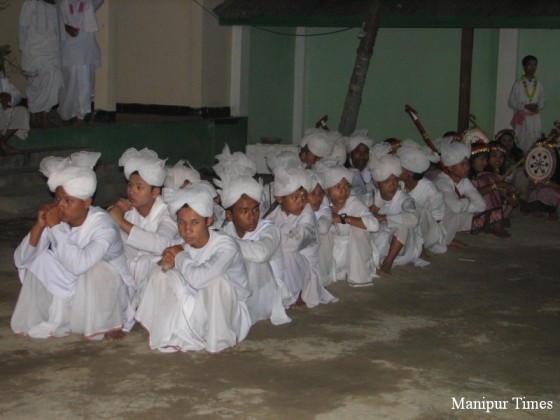
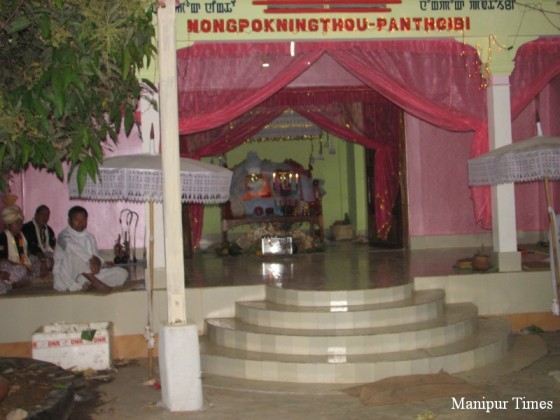
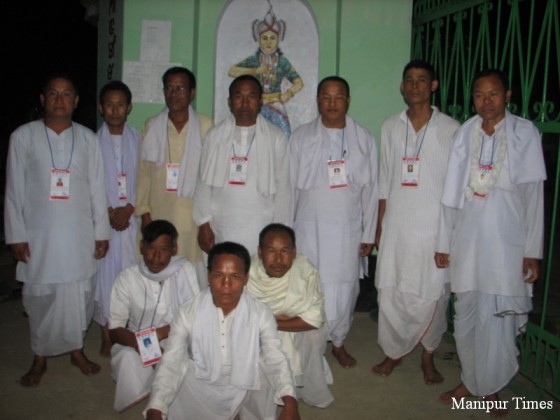
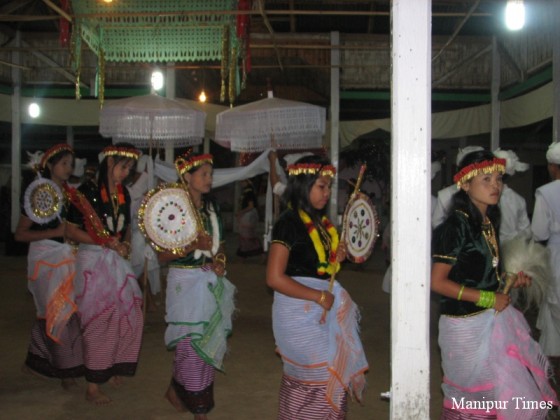

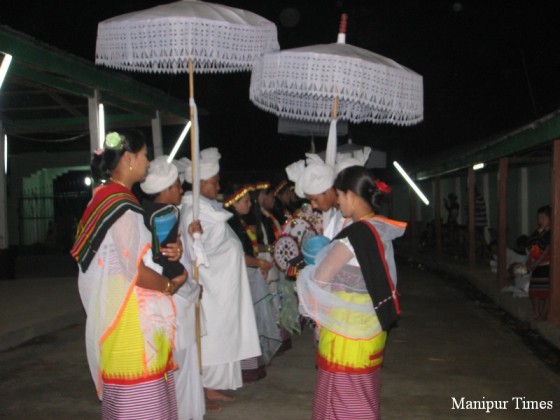
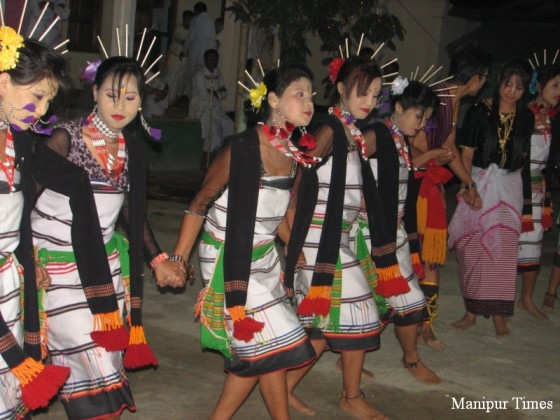
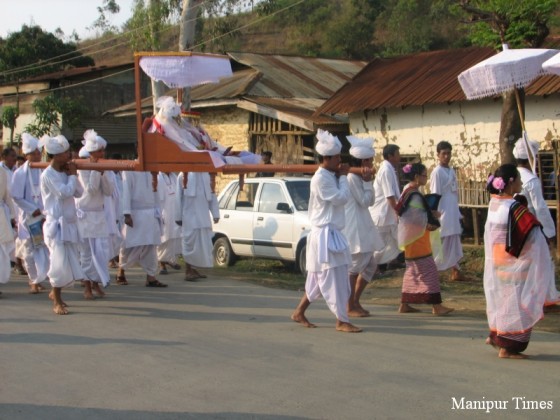
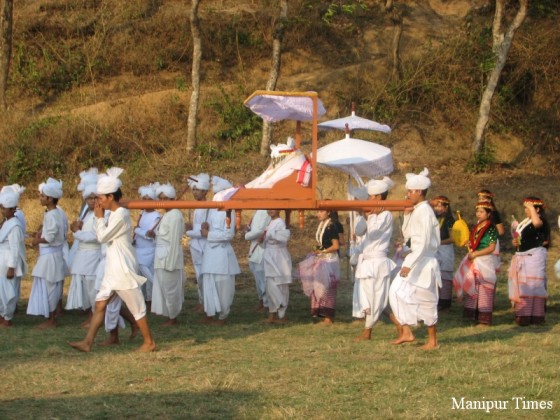
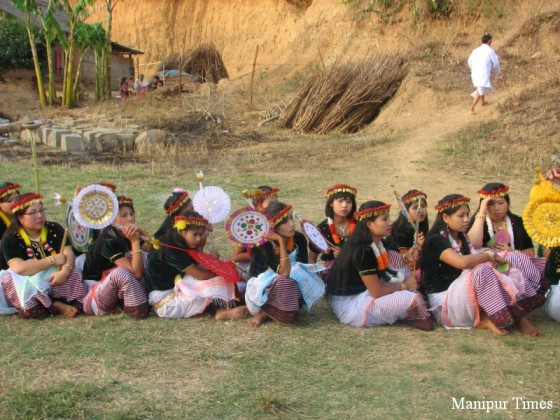

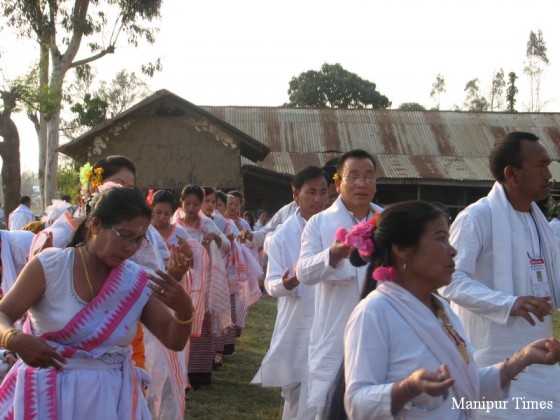
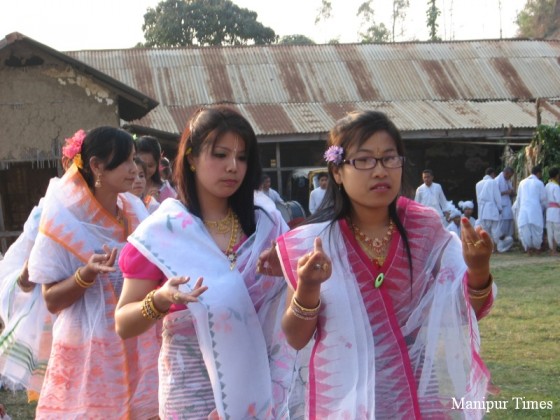
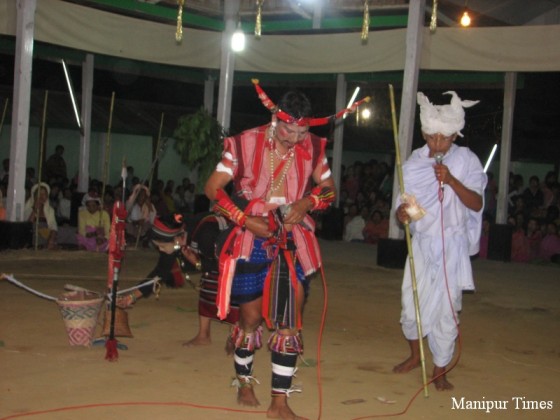
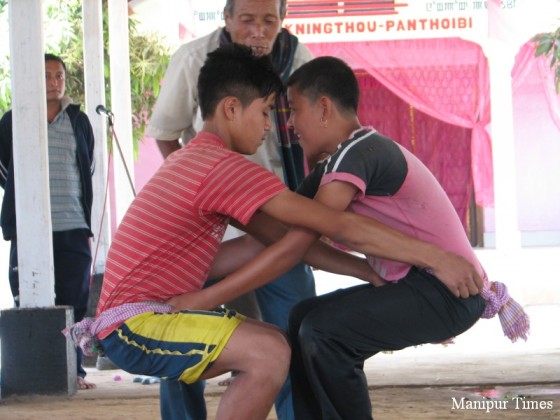



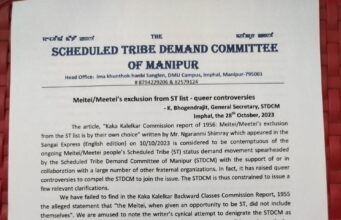







❤️
Yaiphare yaiphare
Yaipharae yaipharae